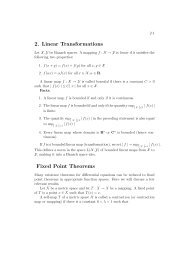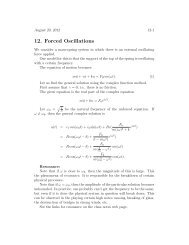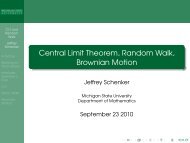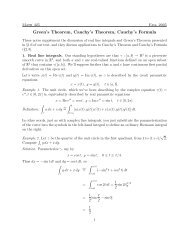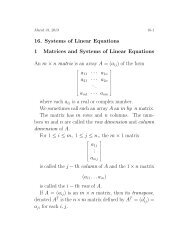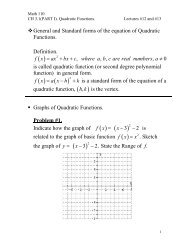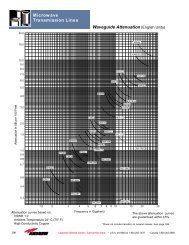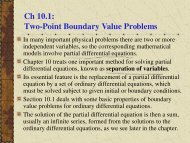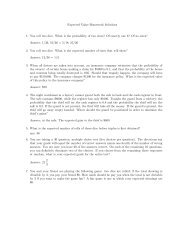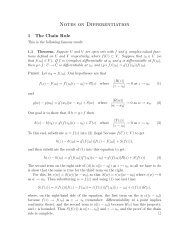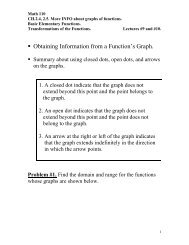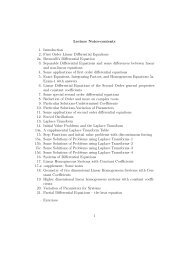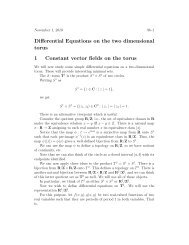Differential Equations on the two dimensional torus
Differential Equations on the two dimensional torus
Differential Equations on the two dimensional torus
Create successful ePaper yourself
Turn your PDF publications into a flip-book with our unique Google optimized e-Paper software.
October 26, 2011 9a-3Let π : R 2 → T 2 denote <strong>the</strong> can<strong>on</strong>ical projecti<strong>on</strong>.When t = q/ω 1 , we have x(t) = q, y(t) = p, so <strong>the</strong> projecti<strong>on</strong> π(γ 0 ) = γinto T 2 is a closed curve (topological circle) in T 2 .Since all <strong>the</strong> soluti<strong>on</strong>s are vertical tranlates of γ 0 we have that allsoluti<strong>on</strong>s in T 2 are periodic of <strong>the</strong> same period.2. ω 2ω 1is irrati<strong>on</strong>al.This case is more interesting. We will show that every orbit in T 2 isdense in T 2 . Hence, all of T 2 is a minimal set.Let us show that <strong>the</strong> orbit through (0, 0) is dense in T 2 . The analogousstatement for o<strong>the</strong>r orbits is similar.C<strong>on</strong>sider <strong>the</strong> circle S 1 = π({x = 0}).There is a first return map F : S 1 → S 1 (also called Poincaré map)obtained by taking a point (0, y) and taking <strong>the</strong> point (1, F (y)) where<strong>the</strong> orbit through (0, y) hits <strong>the</strong> line {x = 1}.Let us compute F .The orbit through (0, y) is {(ω 1 t, ω 2 t + y), t ∈ R}.We getHence,ω 1 t = 1ω 2 t + y = F (y).t = 1/ω 1 , F (y) = y + ω 2 /ω 1So, letting α = ω 2ω 1we get that F (y) = y + α (mod 1).To show that <strong>the</strong> orbits of X are dense, it suffices to show that <strong>the</strong>iterates {F n (y), n ≥ 0} are dense mod 1This is <strong>the</strong> number <strong>the</strong>oretic statement: for α irrati<strong>on</strong>al, and<strong>the</strong>nA = {nα + m : n ∈ Z, m ∈ Z},



